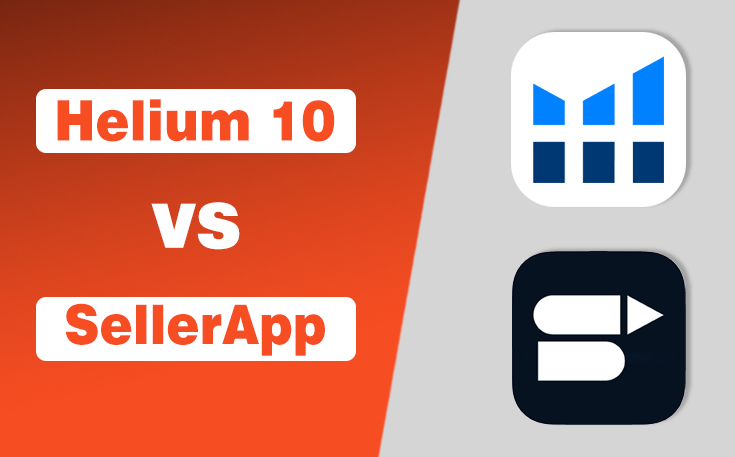You may have known that content marketing is one of the best ways to drive more traffic to your website or blog. But do you know that SEO-friendly content is the key element to cultivating desired content marketing outcomes? Yes, it is.
Most of the people think that SEO-optimized content cannot be great for users. It might be when people fail to create content that appeals to search engines as well as is not easily readable for use. Writing both engaging and SEO-friendly content requires a bit more effort and there is a bunch of basics that need to be covered.
This blog post contains SEO-friendly content writing tips that can help you write content that is both user-friendly and optimized for search engines.
An Overview of Content Marketing
Before going ahead, you first know about content marketing, It is a broader term that involves creating different types of content to share them online and reach a larger audience base.
The most commonly used forms of content are:
- Blog posts
- Videos
- Podcasts
- Social Media posts
- eBooks
- Webinars
What is Content Writing? A Short Introduction
Content writing is the process of researching a specific topic and understanding its details before shaping it into your own words.
It can be of different types, as mentioned below.
- Blog posts
- Academic writing
- Manuals
- Social media posts and captions
- Newsletters
Blog posts are the area where your content writing habits come into play. Simple articles are not enough if you want to improve the visibility of your site in the search engine. You have to follow the Google guidelines to create helpful and people first content, as it will ultimately make it SEO friendly.
SEO Friendly Content Writing Tips
I am a blogger and have experienced the importance of SEO friendly content. Therefore, I am very specific regarding my content marketing strategy and going to share the same in this guide. So, you should understand the points mentioned here and implement them correctly to take your experience to an advanced level.
1- Do Some Keyword Research
Proper keyword research before getting started with a blog post provides you with the best keyword you can target to get more users for your blog. It is the very first step of a strong search engine optimization strategy to rank higher in search engines. You can get plenty of keyword ideas around your target keywords that are easy to rank in search engines.
You have to consider the following factors when doing keyword research.
- High monthly search volume
- Low Keyword difficulty ( KD )
- High CPC keywords
- Relevant long tail keywords
It is important for you to create a standard to finalize your keywords to write an article on them. It all depends upon your preferences and the authority of your blog. However, it would be best if you target the low KD keywords.
Several SEO tools are accessible on the web that can help you calculate these factors and make this task easier and more efficient for you. These include Moz, Semrush, and Ahrefs. Here, I am going to show you a simple keyword research tactic with the help of the Ahrefs Keyword Generator tool so you can get these points in a better way.
- Think about a topic relevant to the niche of your blog and search for it in the Ahrefs tool, like I am searching Ahrefs Pricing.

- Check the search volume and difficulty mark and compare it with the standards you have set. If they match them, you can start writing.

I always pick those keywords for SEO friendly content whose difficulty is Easy and the search volume is more than 1000, calculated by Ahrefs. The primary reason is that they can be ranked in the search engine results pages quite comfortably.
Make use of the LSI Keyword
It is always great to integrate LSI (Latent Semantic Indexing) keywords in a blog post-writing process. It helps the search engines to understand what exactly your content is about.
The use of the LSI keyword in your content allows you to appear in more searches with different keywords. Google search and LSI graph are the best ways to find the most relevant and best-performing LSI keywords around your target keyword.
2- Think Before You Write (E-E-A-T)
Before you start writing, think about the message you are about to convey with your article or blog post. You must be well aware of what you want to tell your readers and how you can convey your message more effectively to keep the readers engaged.
Spending some precious moments before answering all these questions can help you get started in the best possible way to complete your article with the perfect tone and words.
People always surf the web to find solutions to their queries. As the competition is at its peak, Google has ensured maintaining the quality of its SERP.
Therefore, it only prefers those sites which follow the people first approach and write helpful articles besides quality content writing.
All these tactics are summed up in a single term, called E-E-A-T.
- E: Expertise
- E: Experience
- A: Authoritativeness
- T: Trustworthiness
When you share your experience in your content, it will not only improve its quality but also give signals to Google and other search engines regarding your approach to providing accurate solutions to users. Hence, you will be able to achieve higher SERP rankings.
3- On Page SEO
Utilize the basic on-page SEO techniques to optimize your content for search engines. In the under section, I have explained some of the key areas, where you have to put focus on.

Keywords Placement
First of all, you have to place your target or primary keyword in your content to make it SEO friendly. While you can use it naturally throughout the article, there are some specific places that are important for search engine optimization. Therefore, you should practice integrating your keywords in them. Here they are:
- Main Title

- SEO Title


- Tags

- URL

- 1st Paragraph or in first 100 words.

This tactic makes it easier for search engine crawlers to understand your article for ranking. The only thing to consider is that you have to opt for a natural method when placing your keywords. Otherwise, your article will be considered spam, and consequences can be in the form of a Google Penalty, that will de-rank your site.
Internal Links
Internal linking is another White Hat SEO tactic that allows you to connect the articles of your blog that cover the same topics. For example, in my case of writing Ahrefs Pricing, I have already published a review article on Ahrefs. Thus, I interlinked both of them. You can also do the same as Google loves it.
Nevertheless, the internal linking must be relevant. Instead of the review article, if I interlink a gaming device article, it could be a whole different story and Google obviously considers it spam. So, you have to be specific to write SEO friendly content.
Catchy Headings
SEO friendly content writing requires you to create catchy and attractive headings and subheadings that can arouse curiosity among the users, Ultimately, they will engage more with the blog which can benefit you in search engine rankings. While adding the primary keyword in your H2 or H3 is necessary, there must be some relevant headings to capture the attention of users.
Error Free Content
Google dislikes content that contains grammar and spelling mistakes. Therefore, you should eliminate them to improve your writing and make it SEO friendly. While manual efforts are essential, tools like Grammarly, WordTune, Hemingway Editor, and other similar ones can help you a lot in this regard and save enough time.
Additionally, AI generated contents are highly disliked by Google as it prefers E-E-A-T optimized content. Therefore, it would be better to get help from top-tier AI detector tool to make sure your content has no AI-generated patterns.
Optimize Readability
It is of no surprise that you have written content with accurate information and data, but it is difficult to read. I have faced this challenge so many times that I cannot calculate.
Nevertheless, with time, I overcome this flaw by considering myself as a reader while writing the article. Besides, some platforms like Yoast SEO and Rank Math helped me a lot to optimize the readability of my content.

These easy to read contents can capture the attention of the audience in no time, an SEO aspect highly appreciated by Google. So, you must focus on using simple and scrabble words to improve the readability score of your articles.
Use Signal or Transition Words
The use of signal words in the content makes it easy to read and scannable too. Readers can easily scan through the content to grasp the main points. For instance, if you are writing the content with the title “3 benefits of SEO for business”, then you should be using signal words like ‘first of all’, ‘secondly’ and ‘finally’, etc.
It makes the content easy to scan for the readers. Surely, furthermore, indeed, and for this reason are some other transition words that can keep the users engaged with your blog posts.
4- Image SEO
Previously, simple content was enough to grab the attention of the users and rank higher in the search engine results pages. Nevertheless, now, you have to go one step ahead and focus on adding more and more relevant images to optimize your blog posts for SEO. In addition, you have to focus on certain Image SEO aspects, like
- Add ALT text
- Write catchy captions
- Focus on the aspect ratio compatible with your theme
In this way, you can optimize your chances of appearing higher in the search engine. Otherwise, it would be very challenging to beat the competition.
5- Structure the Content
Creative use of headings structures the entire page and also makes the content well organized. The use of bullets and headings not only improves the readability but makes the content SEO-friendly as well. Headings enable search engines to grasp the main ideas and points of the content.
Also, it allows the users to find the exact details or information quickly. Moreover, try to use your target keywords creatively in the headings to boost your search engine optimization for your business site or blog.
6- Interlink the Previous Posts
Although I previously talked about Internal linking, there is something more to add to it. If you have plenty of well-written blog posts related to the topic you are currently writing about, remember to link those articles or blog posts in the new article by using the most relevant keywords. It makes the site navigation better to secure higher ranks in search engines.
Linking your old posts to the new article also increases the page views and keeps the readers engaged with your blog. Interlinking enables the readers to find relevant content on the blog or site conveniently without spending a lot of time.
7- Focus on Voice Search SEO
The evolution of assistant devices like Alexa, Google Assistant, Siri, Cortana, and others has made it possible for users to browse the Internet with the help of their voices. These devices usually scrap the results from the sites appearing at the top of the SERP. Therefore, you have to focus on voice search SEO and improve your content quality. It will ultimately make your articles more SEO friendly.
Needs Professional Help
Instead of writing by yourself, you can hire Webtech Solutions as your content writing agency to work with a team of highly skilled writers. We offer affordable content writing services for various industries.
Sum Up
SEO-friendly content writing is essential for content marketing and boosting traffic to your website or blog. Some may think SEO optimization sacrifices user experience, however, this essay underlines the link between engaging content and search engine exposure.
Strategic keyword research, pre-writing considerations, LSI keywords, and optimization are stressed in the advice. Signal words, headings, bullet points, and connecting to prior entries improve readability and SEO.
These methods can provide your content with the optimal mix of usability and SEO to achieve higher rankings in the search engine results pages.
Need custom app with amazing features?
Get a Quote




